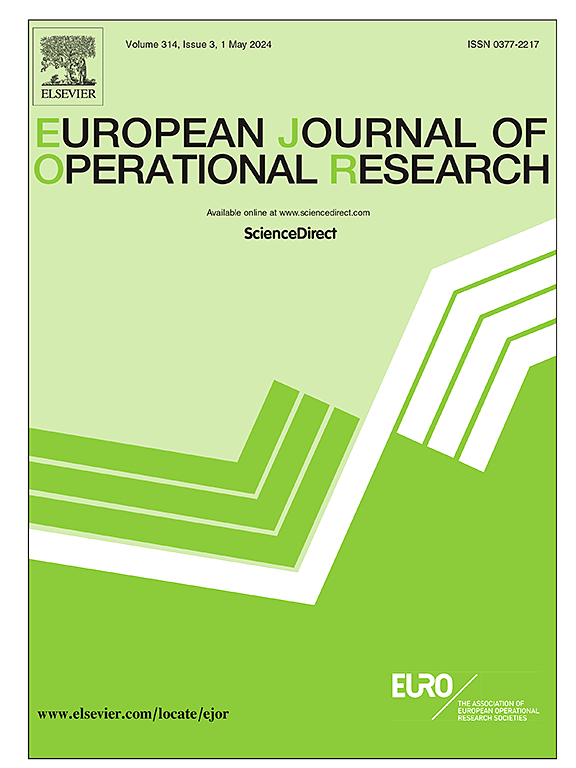估计非过拟合凸生产技术:一种随机机器学习方法
IF 6
2区 管理学
Q1 OPERATIONS RESEARCH & MANAGEMENT SCIENCE
引用次数: 0
摘要
过拟合是一个经典的统计问题,当一个模型与特定的观察数据样本过于接近时,可能会限制其泛化性。虽然数据包络分析(DEA)是评估决策单元(dmu)相对效率的一种强大的非参数方法,但它对最小外推原则的依赖可能导致对过拟合的担忧,特别是当目标超出评估样本中的特定dmu而进行更广泛的推断时。在本文中,我们提出了一种适应随机梯度增强的方法来估计生产可能性集,以减轻过拟合,同时满足凹凸性和自由可处置性等形状约束。我们的方法不是要取代DEA,而是要补充它,为泛化很重要的场景提供额外的工具。通过仿真实验,我们证明了该方法与DEA相比具有良好的性能,特别是在高维环境下。此外,将基于机器学习的新技术与修正凹非参数最小二乘(C2NLS)进行了比较,显示出具有竞争力的性能。我们还说明了DEA中通常的效率措施如何在我们的方法下实施。最后,我们提供了一个基于国际学生评估项目(PISA)数据的实证例子来证明新方法的适用性。本文章由计算机程序翻译,如有差异,请以英文原文为准。
Estimating non-overfitted convex production technologies: A stochastic machine learning approach
Overfitting is a classical statistical issue that occurs when a model fits a particular observed data sample too closely, potentially limiting its generalizability. While Data Envelopment Analysis (DEA) is a powerful non-parametric method for assessing the relative efficiency of decision-making units (DMUs), its reliance on the minimal extrapolation principle can lead to concerns about overfitting, particularly when the goal extends beyond evaluating the specific DMUs in the sample to making broader inferences. In this paper, we propose an adaptation of Stochastic Gradient Boosting to estimate production possibility sets that mitigate overfitting while satisfying shape constraints such as convexity and free disposability. Our approach is not intended to replace DEA but to complement it, offering an additional tool for scenarios where generalization is important. Through simulation experiments, we demonstrate that the proposed method performs well compared to DEA, especially in high-dimensional settings. Furthermore, the new machine learning-based technique is compared to the Corrected Concave Non-parametric Least Squares (C2NLS), showing competitive performance. We also illustrate how the usual efficiency measures in DEA can be implemented under our approach. Finally, we provide an empirical example based on data from the Program for International Student Assessment (PISA) to demonstrate the applicability of the new method.
求助全文
通过发布文献求助,成功后即可免费获取论文全文。
去求助
来源期刊

European Journal of Operational Research
管理科学-运筹学与管理科学
CiteScore
11.90
自引率
9.40%
发文量
786
审稿时长
8.2 months
期刊介绍:
The European Journal of Operational Research (EJOR) publishes high quality, original papers that contribute to the methodology of operational research (OR) and to the practice of decision making.
 求助内容:
求助内容: 应助结果提醒方式:
应助结果提醒方式:


